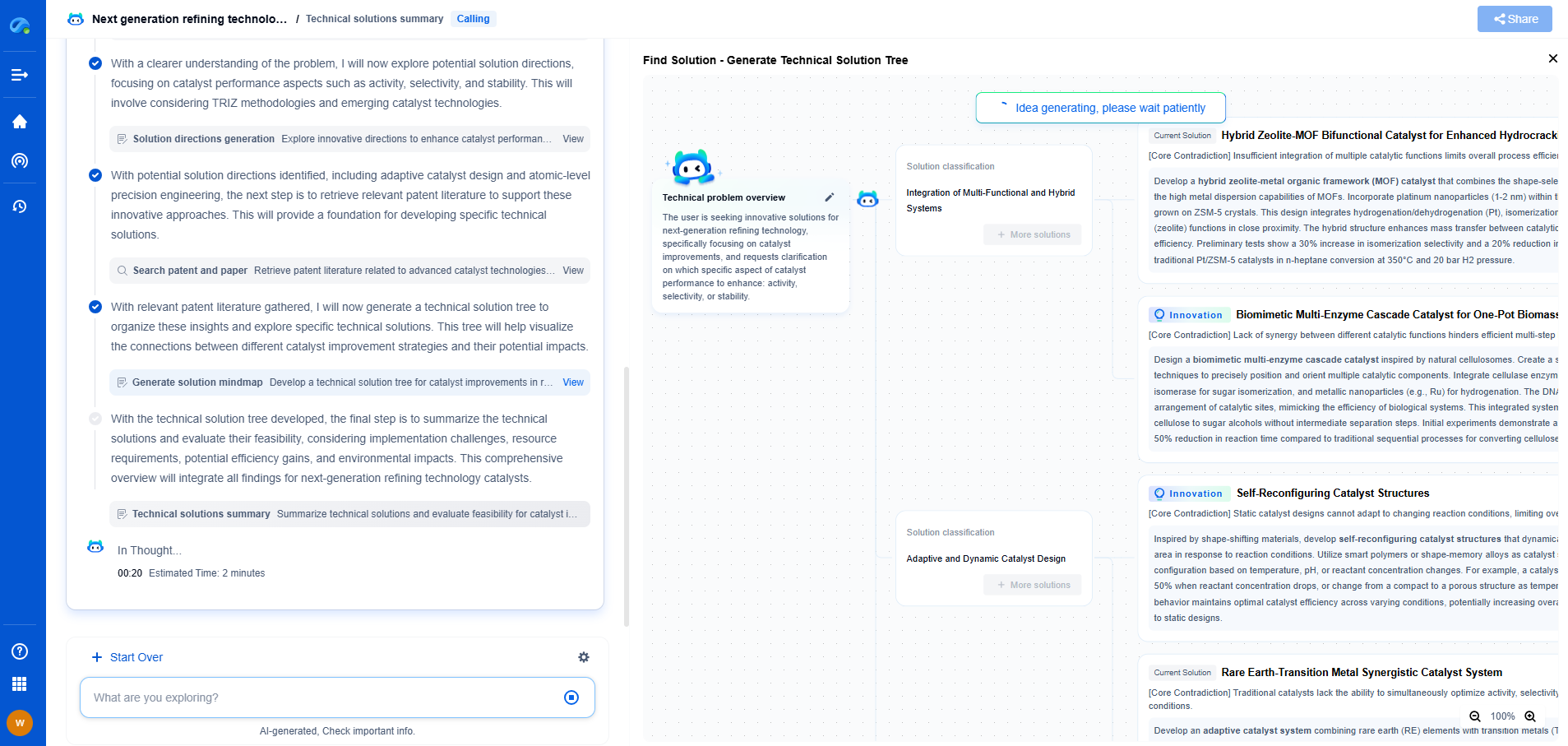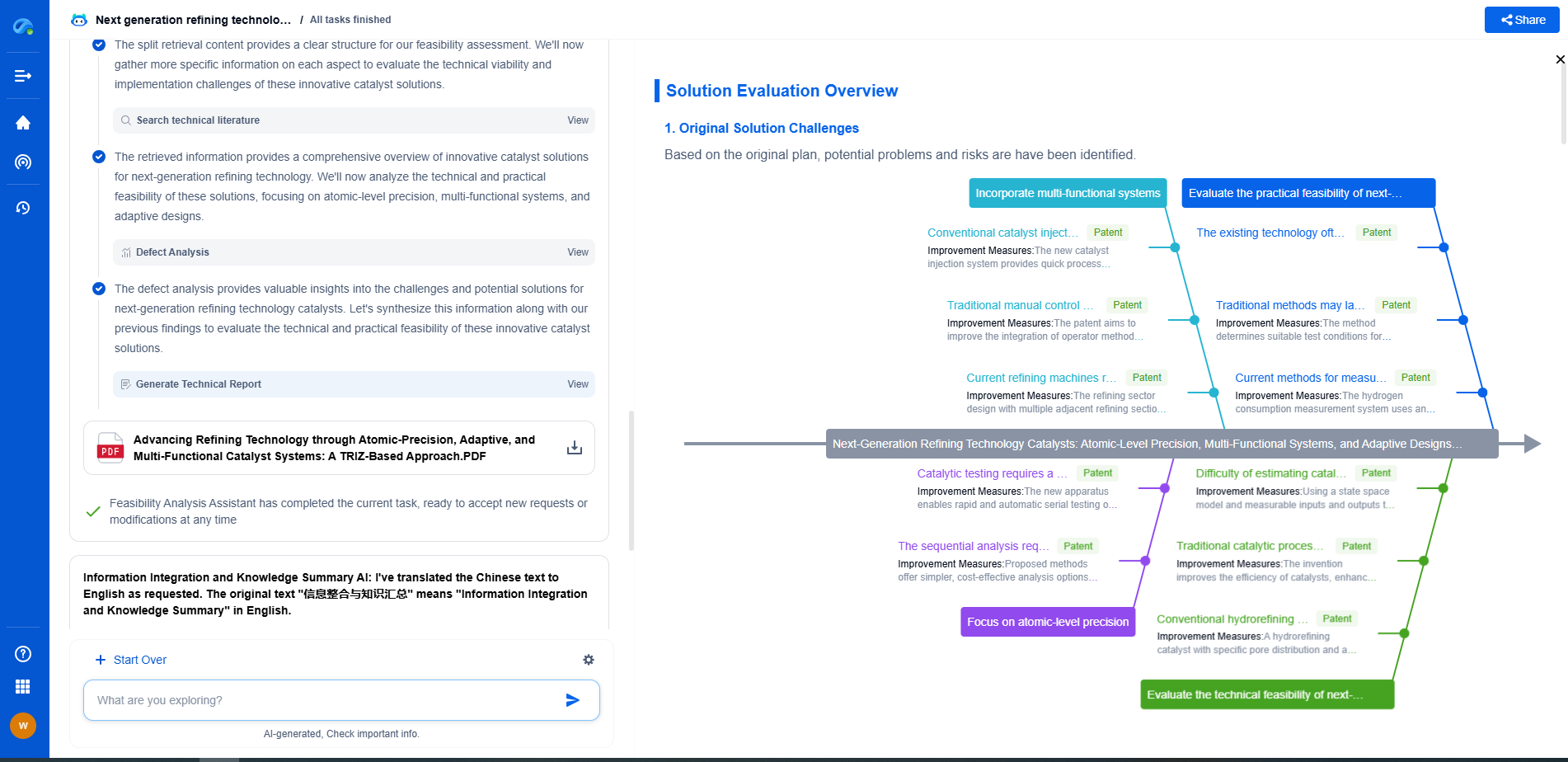Advantages and disadvantages of coiled tubing drilling
JUN 20, 2025 |
Coiled tubing drilling (CTD) has emerged as a revolutionary technique in the oil and gas industry, offering a range of advantages and some notable challenges. This method involves the use of a continuous, flexible pipe that is spooled onto a large reel, allowing for a variety of operations to be performed more efficiently than with traditional rigid drilling methods. While coiled tubing drilling has garnered significant interest, it is essential to examine both its benefits and limitations to understand its role in modern drilling operations.
**Advantages of Coiled Tubing Drilling**
1. **Improved Operational Efficiency**
One of the primary advantages of coiled tubing drilling is its ability to enhance operational efficiency. The continuous nature of the coiled tubing allows for operations to be conducted without the need to make connections between individual pipe segments, significantly reducing the time spent on rig-up and rig-down processes. This efficiency is beneficial in reducing overall drilling time and associated costs.
2. **Enhanced Safety Profile**
Coiled tubing drilling offers a safer alternative to conventional drilling techniques. The process minimizes the need for manual handling of pipes, thereby reducing the likelihood of accidents and injuries on the rig floor. Furthermore, coiled tubing operations can be performed with a smaller crew, enhancing safety by reducing personnel exposure to potential hazards.
3. **Versatility and Flexibility**
CTD is highly versatile and can be employed in various drilling applications, including horizontal and directional drilling, wellbore cleanouts, and well completions. Its flexibility allows it to navigate through complex well paths and reach otherwise inaccessible reservoirs. This adaptability makes coiled tubing a valuable tool for challenging environments and mature fields where conventional drilling may not be feasible.
4. **Reduced Environmental Impact**
Coiled tubing drilling is often associated with a lower environmental footprint compared to traditional drilling methods. The reduced rig-up time and smaller equipment footprint contribute to decreased land disturbance. Additionally, the ability to perform interventions and workovers without the need for a full drilling rig can lead to less site disruption and reduced emissions.
**Disadvantages of Coiled Tubing Drilling**
1. **Limited Depth Capability**
Despite its many advantages, coiled tubing drilling does have limitations in terms of depth. The flexible nature of the tubing limits its ability to reach the depths that conventional drilling can achieve. This limitation is primarily due to the risk of buckling and the challenges associated with maintaining downhole pressure control at greater depths. As a result, CTD may not be suitable for ultra-deep wells.
2. **Higher Equipment Costs**
The initial capital expenditure for coiled tubing equipment can be higher compared to traditional drilling setups. The specialized equipment required for CTD, such as injectors and reels, can lead to increased upfront costs. However, it's important to weigh these costs against the potential savings in operation time and efficiency gains.
3. **Maintenance and Durability Concerns**
Coiled tubing is subject to wear and tear, particularly in abrasive or corrosive environments. The continuous nature of the tubing means it is more prone to fatigue and damage over time, leading to increased maintenance requirements. Operators must carefully monitor the condition of the tubing to prevent unexpected failures during operations.
4. **Technical Limitations**
CTD requires specialized knowledge and expertise, as the operational techniques differ from those used in traditional drilling. The technology is still evolving, and operators may face technical challenges related to well control, high-pressure operations, and equipment reliability. Continuous advancements in technology are necessary to address these challenges and improve the overall effectiveness of coiled tubing drilling.
**Conclusion**
Coiled tubing drilling presents a compelling option for enhancing efficiency, improving safety, and reducing the environmental impact of drilling operations. However, it is not without its challenges. Operators must carefully consider the specific requirements and limitations of their projects before deciding to implement CTD. As technology continues to advance, coiled tubing drilling could play an increasingly important role in the future of the oil and gas industry, providing innovative solutions for complex drilling challenges.
Navigating the Complexities of Drilling Innovation? Let AI Do the Heavy Lifting
In an industry where subsurface conditions, materials science, and drilling dynamics evolve rapidly, staying ahead of technical innovation and protecting your intellectual property can be overwhelming.
Patsnap Eureka, our cutting-edge AI assistant, is built for R&D and IP professionals in high-tech industries like drilling technologies. Whether you're optimizing rotary steerable systems, evaluating high-temperature materials, or exploring next-gen automation in directional drilling, Eureka enables real-time analysis of the latest patents, technology landscapes, and competitive movements—all from one intelligent, intuitive platform.
Ready to accelerate your development cycle and make strategic decisions with confidence? Explore Patsnap Eureka today—where smart drilling starts with smarter insights.
- R&D
- Intellectual Property
- Life Sciences
- Materials
- Tech Scout
- Unparalleled Data Quality
- Higher Quality Content
- 60% Fewer Hallucinations
Browse by: Latest US Patents, China's latest patents, Technical Efficacy Thesaurus, Application Domain, Technology Topic, Popular Technical Reports.
© 2025 PatSnap. All rights reserved.Legal|Privacy policy|Modern Slavery Act Transparency Statement|Sitemap|About US| Contact US: help@patsnap.com

